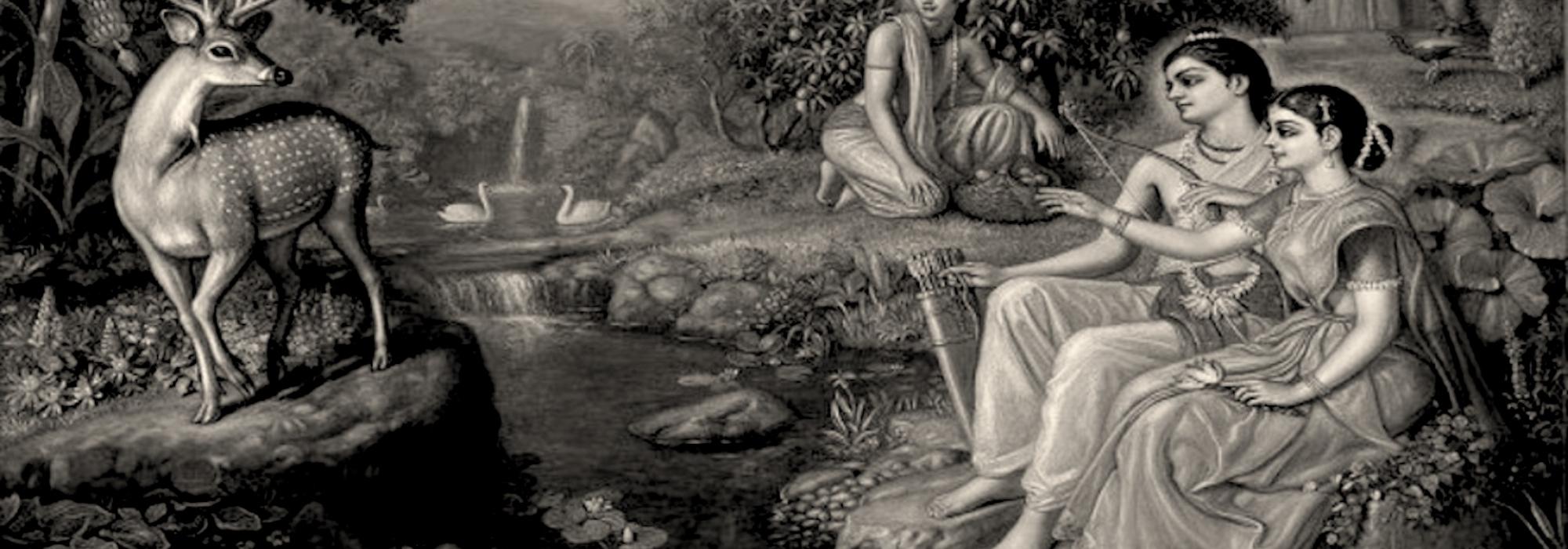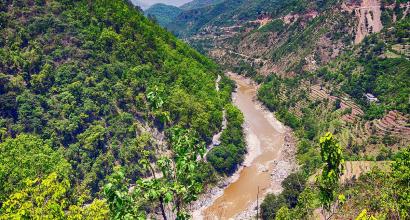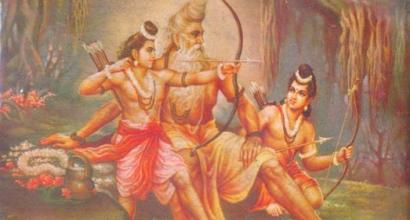maharṣiśuśrūśāsaktam tadvairidhvaṃsanodyatam |
jānakīvihārtam śrīrāmaṃ naumi salakṣmaṇaṃ ||
Always intent on serving the Maharshis, the destroyer of wicked enemies
One who sports with Janaki, I bow down to that Sri Rama who is always accompanied by Lakshmana.
The Ayodhyakanda is often described as the heart of Srimad Ramayana. To extend the same metaphor, it is even more appropriate to term the Aryanakanda as the inner life of the heart of the Ramayana poem. The circumference of the wheel of this heart is the story of the Ayodhyakanda. The hub of this wheel is the story of the Aranyakanda.
Both these Kandas are truly heart-wrenching. In the Ayodhyakanda, if Sri Ramachandra becomes the cause for melting our hearts, in the Aranyakanda, the episodes that occur with both Rama and Sita pierces our heart. Some people might feel that the difficulty faced by Sita is more painful. However, I am not one of them.
In both Kandas, both Rama and Sita’s virtue and goodness is tested. The aspect that stands out in the Ayodhyakanda is Sri Rama’s fidelity to truth and his preparation for sacrifice. Unwilling to accept the kingdom that came to him rightfully, he departs for the forest owing to his conviction in truth. This renunciation is really magnanimous. In the Aranyakanda, the element that stands out is Sita’s discharge of vows and her ability to withstand hardship. The tribulation she faced was far crueler than that of Sri Rama.
The Ramayana story cannot begin without the mention of the Ayodhyakanda. If there was no Aranyakanda, the story would have been crippled right there. Sri Rama who set out for the forest-exile, could have easily embarked on a happy sojourn and visited various rivers, mountains, and jungles for fourteen long years and happily returned to Ayodhya. In that case, that would become a travelogue. The world could have regarded Sri Rama, Sita and Lakshmana as great travelers. There would have been no reason to count them among the greatest warriors of the world. The main story of Srimad Ramayana is the destruction of Ravana or the punishment of the enemy of Dharma. The reason for this destruction lay in Ravana’s abduction of Sita. Therefore, the seed of this story is contained in the Aranyakanda.
In this manner, when we ponder upon the episodes and the tenet, it appears justified that the real name for the poem should have been Sitayana. If Janaki Devi had not faced this calamity or if she was not endowed with such unswerving chastity, the story of Rama would’ve trodden a different path. It was Sita Devi who provided the material for the story’s phenomenal renown in the world.
Because we have analysed it in this form, there is nary an injury to Sri Rama’s greatness. The fact he is endowed with extraordinary courage is clearly evident right in the beginning of the story. If he was not so, if he had behaved in a different manner after being separated from Sita, the chain of the story would not have been the story of Rama. It is well-known that Sri Rama’s fidelity to his wife has been worshipped throughout the world. However, the story of Srimad Ramayana would not have attained fulness only on that account. In this manner, the opportunity for Sri Rama’s grand victory was provided by Sita Devi’s penance. In this saintly couple, I feel that her importance is greater.
The main qualities of Sri Rama are: his conviction in truth and detachment towards sensual enjoyments. Sita Devi’s are: fidelity to vows and self-restraint.
The substance of Sita Devi’s Inner Life becomes clear at the beginning of the Aranyakanda. After Sri Rama visits numerous ashrams of Rishis in the Dandakaranya and visits Sharabhanga Muni’s ashram, the other sages present there confide their problems in him and request him to save them from the incessant troubles of the Rakshasas (Sarga 6). Sri Rama’s nature is revealed in the humility of his speech after he consoles them and promises to protect them.
naivamarhatha māṃ vaktuṃ āgnapto'haṃ tapasvinām |
kevalenātmakāryeṇapraveṣṭavyaṃ mayā vanaṃ || (Sarga 6: Sloka 22)
The words uttered by you to me are not requests but commands. I have come to the forest owing to a personal duty. Punishment of the wicked is also a duty for us.
After Sri Ramachandra took this vow, it became imperative for him to equip himself with weapons. Accordingly, he departed from Sharabhanga’s ashram and proceeded towards the ashram of Rishi Sutikshna. There, as he was getting for the onward journey, when Sri Rama picked up the bow and arrows Sita became a little suspicious. It is impossible for a person who holds weaponry in his hands to not use it. The wealth of arsenal is a motivation for cruelty; cruelty is a sin; thus, Rishis and sages must give up weapons, which are a cause for cruel actions – Sita gives this discourse to Sri Rama and gives an example of a Puranic story (Sarga 9). Among sins, three are most important: (1) Untruth (2) Coveting another person’s wife (3) Unprovoked enmity. Among these, Sri Rama gives no chance for the first two. Her doubt is whether he will incur the third sin. She says:
agnisaṃyogavaddetuḥ śastrasaṃyoga ucyate |
snehāśca bahumānāśca smāraye tvāṃ na śikṣaye || (Sarga 9: Slokas 23, 24)
I not preaching to you. I am merely reminding you of what you already know. Friendship with weapons is akin to friendship with fire.
strīcāpalādeśadudāhrutam me dharmaṃ ca vaktuṃ tava kassamarthaḥ |
vicāryabuddhyātusahānujena yadrocate tat kuru mayā cireṇa || (Sarga 9: Slokas 33)
This is the dignity of Sita’s speech. These lines reveal exactly how delicate and pure her mind was. Purity, simplicity, delicateness along with loyalty, fear of sin and magnanimous outlook – these are the true traits of Sita. We must keep these qualities in mind while examining the story further.
A sentence that Sri Ramachandra utters as he gets ready to depart from Suktikshna’s ashram towards Agastya’s ashram must be remembered by all of us now, in 1968 CE:
amārgeṇāgatām lakṣmīṃ prāpyevānvayavarjitaḥ | (Sarga 4: Sloka 8)
Just like how the world finds it difficult to tolerate the arrogant egotism of a rogue who acquires wealth through illegitimate means, the heat of the Sun in the afternoon is unbearable.
Let the bribe-takers and the black marketeers tap their own shoulders in their own praise!
Later, when Sri Ramachandra goes to the ashram of Agastya, the conversations that ensue there are really splendid.
To be continued
















































